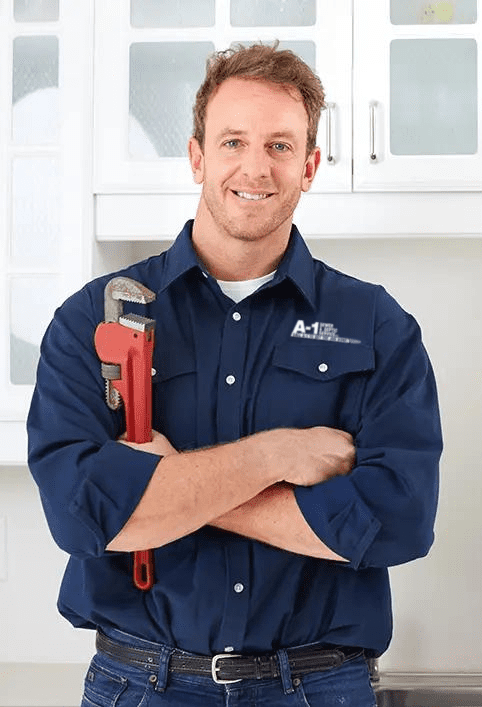It has happened to even the best of us; you’ve filled the dishwasher with the dirty plates from dinner, started the machine and gone into another room to watch television. After a few minutes, you get up to grab a drink of water from the kitchen, only to find the floor covered in water and soap from the dishwasher.
It could be easy to panic. On top of cleaning up the mess, you want to make sure that there is nothing broken in the dishwasher so that you don’t have to clean up another mess in a few days. The good news is that A-1 Sewer and Septic Service is here to provide the helpful tips you need!
Whether your dishwasher leaking is caused from a blown door gasket or other gaskets, cracked drain hose (or a drain hose with a clog!) or the clamp for the dishwasher door is not latching fully and allowing water to come out of the bottom of the dishwasher front, when you see those suds and wonder what there could be that would cause flooding, don’t panic, breathe, and follow some of the tips below.
Steps to Take When Your Dishwasher Floods
When you find your dishwasher flooding, first follow these steps:
- Unplug the washer or shut off the circuit breaker. Water and electricity is a dangerous combination and before doing anything, make sure that you are safe!
- Remove all dishes and dish racks from the washing machine.
- Find the drain gate at the bottom of the washing machine and clear any debris that may be found inside the drain.
- Wait to see if the water is draining.
If the water drains at this point, great! The problem is likely solved. If water is still not draining from the dishwasher, it may mean that there is a problem with the hose that connects from the back of the dishwasher to the kitchen sink.
Begin by using a bucket to scoop water out of the bottom of your dishwasher tub so it can be pulled from the wall. When you can move it away, remove the hose from the dishwasher and run water from the kitchen sink into the hose. If the water stays blocked, the hose can be manually cleared of debris or replaced with a new hose from a home improvement store.
If you find that the door gasket has worn out, and is allowing water to come out of the front of the dishwasher door, then finding the correct replacement gasket, ordering it and installing the new gasket may be a DIY solution that is able to solve your problems.
Additionally, in the future, it’s always a good idea to run your garbage disposal in your sink before running dishes through your washer, as that will help to clear out food particle buildup in the garbage disposal and drain line, and can help avoid blockages or clogs, and therefore potential dishwater flooding. Running hot water and baking soda, or dish soap and hot water, and help clear the garbage disposal out. These, and other dishwasher drain clogs/blockages, are among the most common reasons for dishwasher issues and should be part of any DIY troubleshooting.
There’s also times when the dishwasher itself is having issues, whether that’s not stopping a wash cycle because the float switch is malfunctioning and that causes the water level to back up and cause possible water damage. Kinks in the drain lines or supply lines can cause issues, cracks in the water inlet valve, or if you have a drain pump that fails; all of these can be possible causes for a leaking dishwasher.
Call A-1 Sewer and Septic For Dishwasher Repair Services
If the water flows through easily, reassemble the washing machine and try running it again. If it floods again, it is time to call A-1 Sewer and Septic Service to take a closer look at what may be causing the issue. Getting a plumber onsite can help avoid larger problems down the road that may lead to the need for water damage restoration services. While we do not offer appliance repair services, we are able to help clear clogs, blockages in the drain hose, water supply lines, or other plumbing parts and pieces that a plumber would need to hook up.
Making sure that an experienced plumber examines the machine can prevent expensive repairs down the road. Give A-1 a call today!



